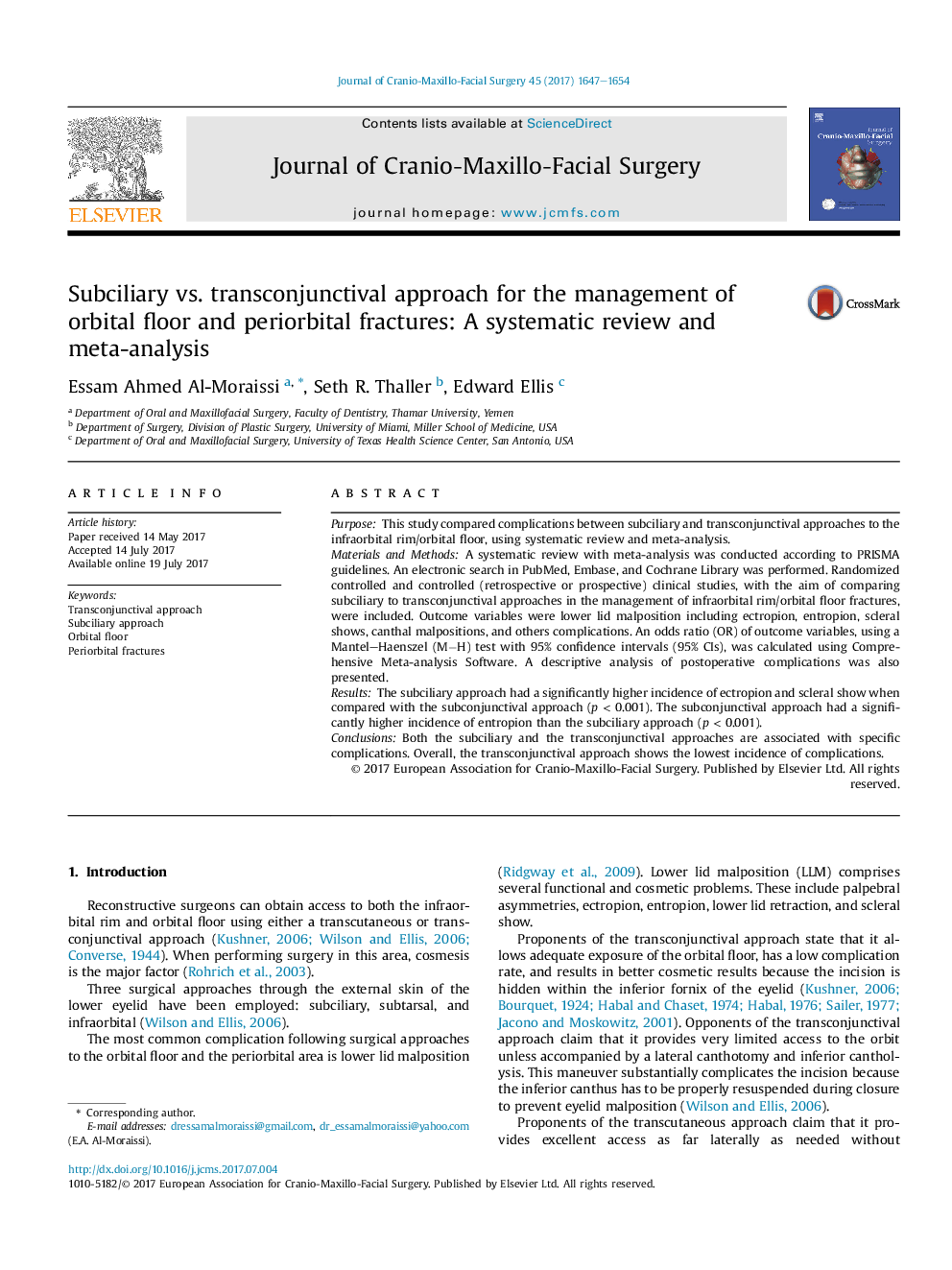| کد مقاله | کد نشریه | سال انتشار | مقاله انگلیسی | نسخه تمام متن |
|---|---|---|---|---|
| 5639991 | 1585436 | 2017 | 8 صفحه PDF | دانلود رایگان |

PurposeThis study compared complications between subciliary and transconjunctival approaches to the infraorbital rim/orbital floor, using systematic review and meta-analysis.Materials and MethodsA systematic review with meta-analysis was conducted according to PRISMA guidelines. An electronic search in PubMed, Embase, and Cochrane Library was performed. Randomized controlled and controlled (retrospective or prospective) clinical studies, with the aim of comparing subciliary to transconjunctival approaches in the management of infraorbital rim/orbital floor fractures, were included. Outcome variables were lower lid malposition including ectropion, entropion, scleral shows, canthal malpositions, and others complications. An odds ratio (OR) of outcome variables, using a Mantel-Haenszel (MâH) test with 95% confidence intervals (95% CIs), was calculated using Comprehensive Meta-analysis Software. A descriptive analysis of postoperative complications was also presented.ResultsThe subciliary approach had a significantly higher incidence of ectropion and scleral show when compared with the subconjunctival approach (p < 0.001). The subconjunctival approach had a significantly higher incidence of entropion than the subciliary approach (p < 0.001).ConclusionsBoth the subciliary and the transconjunctival approaches are associated with specific complications. Overall, the transconjunctival approach shows the lowest incidence of complications.
Journal: Journal of Cranio-Maxillofacial Surgery - Volume 45, Issue 10, October 2017, Pages 1647-1654